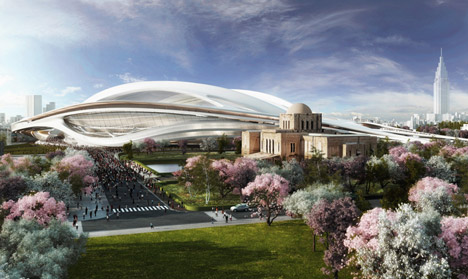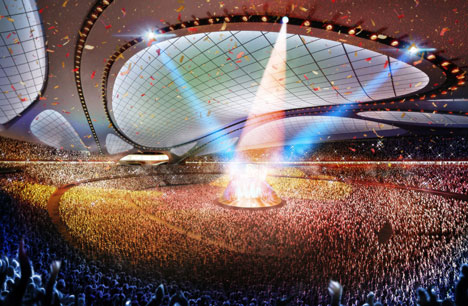Tokyo 2020 Olympics to centre around Zaha Hadid's stadium
News: the forthcoming National Stadium of Japan by Zaha Hadid Architects is now set to become the main sporting venue for the 2020 Olympic and Paralympic games, following the news that Tokyo will be the host city.
The new 80,000-seat stadium will host the opening and closing ceremonies for the 2020 games, as well as athletics, football and rugby events.

"The stadium will become an integral part of Tokyo's urban fabric, directly engaging with the surrounding cityscape to connect and carve the elegant forms of the design," said Zaha Hadid, after winning a competition to design the stadium in November.
"Our three decades of research into Japanese architecture and urbanism is evident in our winning design and we greatly look forward to building the new National Stadium," she added.

Set to replace the existing Kasumigaoka National Stadium, the new building will join Kenzo Tange's iconic 1964 Olympic stadium in Yoyogi Park, which will function as a handball arena this time around. Zaha Hadid Architects will also work on this building, renovating the structure and adding a retractable roof.
Two other venues from the 1964 games - the Nippon Budokan and the Tokyo Metropolitan Gymnasium - will also be reused, offering venues for judo and table tennis.
Additional arenas will be constructed in downtown Tokyo in an effort to save energy and reduce the need for transport investment, while the Olympic village is proposed on Tokyo's harbour and will be converted into housing after the games are over.
Tokyo was named as the host city for the 2020 Olympic and Paralympic games over the weekend and will follow on from Rio de Janeiro in 2016. Find out more about Rio 2016 »
Zaha Hadid Architects previously designed the Aquatics Centre for the London Olympics in 2012, which recently had its two temporary wing-like seating stands removed. See more architecture by Zaha Hadid »